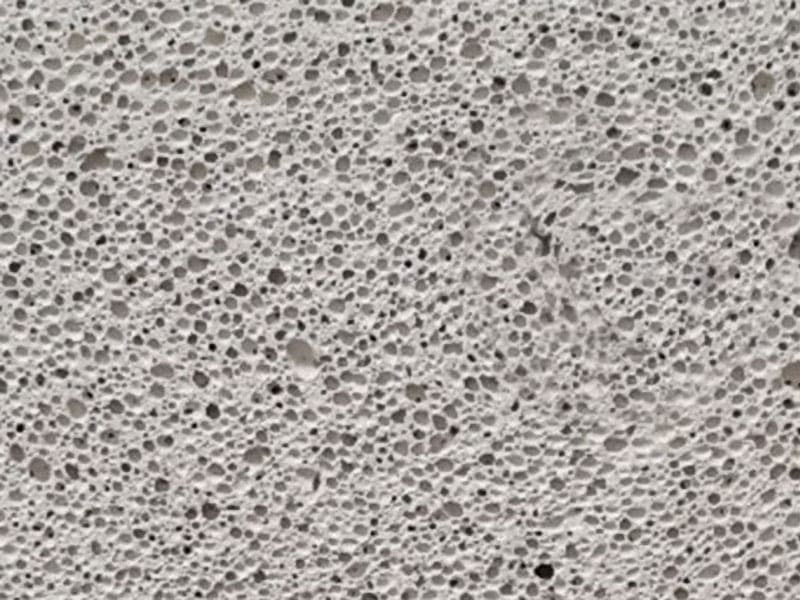How Do I Know if my Building Contains RAAC and Asbestos?
A key subject of concern for many people owning and/or managing public, commercial, and residential buildings in recent times, has been that of reinforced autoclaved aerated concrete, otherwise known as RAAC.
Several recent incidents have helped bring attention to potential safety concerns in relation to this lightweight concrete, which has visible “bubbles” – like an Aero chocolate bar – and was used especially often for roofing from around the 1950s until the 1990s.
RAAC was used not only for roofs, but also in some cladding, wall, and floor construction. This was on the basis of such perceived strengths of the material as its affordability and light weight compared to traditionally dense concrete, as well as its thermal qualities.
However, with RAAC only typically having an expected lifespan of around 30 years, there has been concern in recent times about instances where the material was installed many decades ago, and may now be in the process of becoming unstable and unsafe.
The urgent need to act on this situation has been highlighted by a number of recent incidents of RAAC roof panels collapsing, even in cases where the affected materials had seemed to be in good condition.
So, if you are reading this article as a building owner or manager, you might be anxious to know how you can identify where RAAC is present within your own building(s). In accomplishing this, you will need to take into account various factors, including the given premises’ age, construction type, and materials used.
Understanding RAAC and its historical use
To reiterate what we stated above, planks made from this increasingly notorious “Aero bar” concrete were in use in construction from the middle of the 1950s, right up until the early 1990s. So, if you are responsible for a building that you know dates from the aforementioned era, this is the first indicator that reinforced autoclaved aerated concrete (RAAC) could be present.
However, unlike the situation with asbestos – which was extremely heavily used in residential, commercial, and industrial buildings alike, right up until the final banning of all forms of the substance in the UK in 1999 – it is important to understand the more specific circumstances in which RAAC tended to be used in buildings.
It is believed that RAAC was particularly heavily used, for example, in schools, hospitals, and public buildings. There has not been as much discussion on the material’s potential use in residential buildings, where it is thought to have been restricted to rooftop plant rooms and some wall panels.
Factors affecting RAAC presence
As we have referenced above, the age of the building will be a big factor in the likelihood of RAAC being present. RAAC was generally used in buildings from the mid-1950s until the early 1990s, so if your premises – or an extension of that premises – was constructed during this timeframe, it is worth being alert to the possibility of RAAC being present.
If, on the other hand, the building dates from well before or long after the aforementioned era, you can probably discount the possibility of RAAC being inside. This is not an absolute guarantee; there is some evidence of RAAC having been used in a limited number of buildings as late as the 2000s.
The building construction type is also likely to be a factor in your deliberations, with RAAC tending to have been especially commonly used in flat roofs. However, the material has also been found in some pitched roofs, as well as in some floors and walls.
RAAC was used in a range of building types; however, it was somewhat less prominently used in residential buildings. It did see use, however, across a variety of non-domestic buildings, encompassing the likes of schools, hospitals, courts, theatres, public toilets, and sports halls.
Identifying RAAC in buildings
As a general rule, it is best to avoid attempting to identify RAAC within your premises by yourself, or to arrive at your own conclusions on the condition of materials within your building that have already been confirmed to be RAAC. Instead, we would urge you to engage a suitably qualified professional for this process, such as a chartered building surveyor or chartered structural engineer.
However, it is worth being aware of the general appearance of RAAC, which – as we have already touched on in this article – resembles an Aero chocolate bar. Panels made from this lightweight concrete are typically light grey or white, with a smooth underside. By contrast, the inside of the planks will have the characteristically “bubbly” texture, with no visible stones (aggregate), unlike the situation with traditional concrete.
Otherwise, if you are attempting to determine whether RAAC is or isn’t present in a building for which you are responsible, you might be best served by looking through past documentation and historical records. There might be records about the construction, for instance, which refer to RAAC or certain common product names, such as Durox, Celcon, or Siporex.
RAAC’s co-existence with asbestos
The aforementioned asbestos connection is an important one to cite, for a few different reasons. Firstly, it should be noted that the peak period of asbestos use in UK construction – around the 1950s until the 1980s – largely coincides with that when RAAC was being widely used.
Secondly, the risks that asbestos and RAAC present could potentially interact – for example, in cases where the collapse of RAAC panels also causes the disturbance of asbestos materials in the same part of the given building. Such disturbance could cause the release into the air of dangerous asbestos fibres, which can present a risk of potentially fatal diseases – such as mesothelioma and asbestos-related lung cancer – if someone breathes in the substance.
These factors combined mean that here at Oracle Solutions, we would urge you to be alert to the potential for asbestos – not just RAAC – to be present in any buildings for which you are responsible.
By arranging to have an asbestos survey carried out in the property before you proceed to consider RAAC, you can ensure you are well-informed on where asbestos is in the building, and the risks it might pose.
If there are any confirmed or suspected asbestos-containing materials (ACMs) on your site, our advice is to cease all RAAC-related work until you have surveyed and dealt with the asbestos.
Steps to determine the presence of RAAC
To re-emphasise what we stated above, there is only a limited amount that you can do yourself to attempt to identify the presence of RAAC in your buildings. So, you are urged to seek out professional support with this process – from a suitably qualified individual, such as a chartered building surveyor or chartered structural engineer – at an early stage.
There are various reasons why you are advised to request qualified professional help so quickly, instead of attempting to carry out a thorough inspection yourself. These include the fact that some form of high-level access – such as a ladder or scaffolding – may be needed in order to get close enough to certain materials to inspect them. Some form of opening-up works may also be needed, so that the professional you hire can sufficiently scrutinise the building structure.
These are processes that you might not be able to effectively and safely do yourself, especially given the potential risk of asbestos-containing materials (ACMs) being present, and liable to disturbance, nearby. Indeed, if it is largely the age of your building that has prompted you to inspect it for signs of RAAC, it is probably a good idea to assume asbestos is present as well (unless previous surveys have been carried out on the site, and confirmed that asbestos doesn’t exist on the site).
A suitable professional will be able to not only determine whether RAAC is present in your premises, but also advise on measures that you may need to implement to help control the risk, such as temporary propping under the roof.
Conclusion: proactive inspection and management will help control the risks of RAAC
While – as we have touched on several times in this article – we do not advise you to treat the inspection of your property for RAAC as a solo or “DIY” process, we would emphasise the importance of taking steps, with the help of an expert, to proactively identify and responsibly manage RAAC on your premises. Doing so will help you guard against the potential risks of both RAAC and asbestos on your site, given the ways in which those two materials’ risks could combine.
By calling the Oracle Solutions team today, you can take the first crucial steps to ensuring the responsible, careful, and legally compliant management of RAAC on your premises. This, in turn, will greatly help you to control any asbestos risks that your site might present.

Written by Brendan Coleman
Brendan Coleman, with decades of experience in the asbestos industry, is a dedicated Quality Manager. Certified as a surveyor and analyst, he is adept in operations and quality management with a keen focus on HSE compliance. His expertise is pivotal in maintaining high safety and efficiency standards. Brendan ensures our UKAS accreditation requirements are consistently met and exceeded, upholding stringent standards in asbestos remediation. His commitment to enhancing quality and customer satisfaction makes him an essential advisor in asbestos management.

